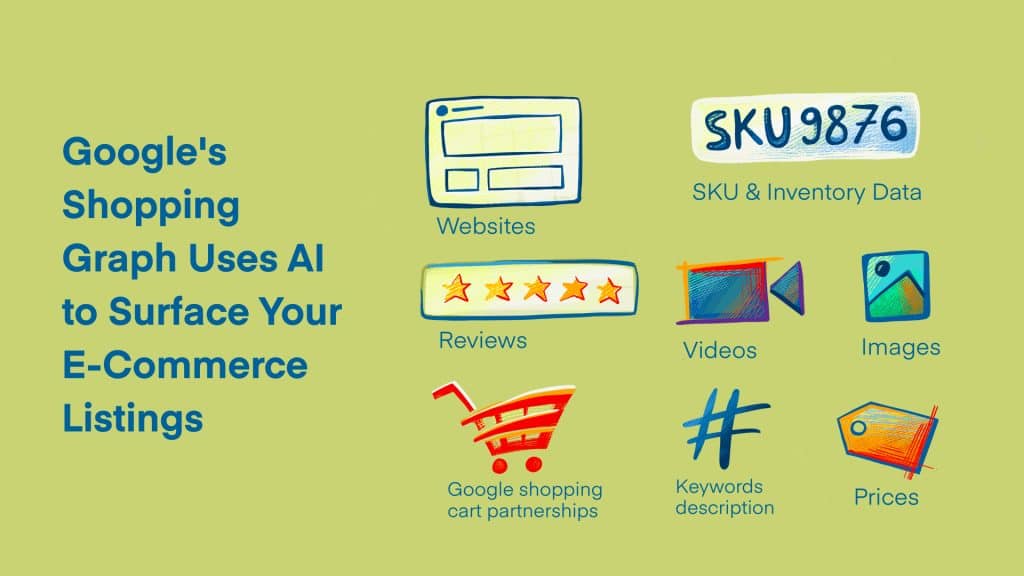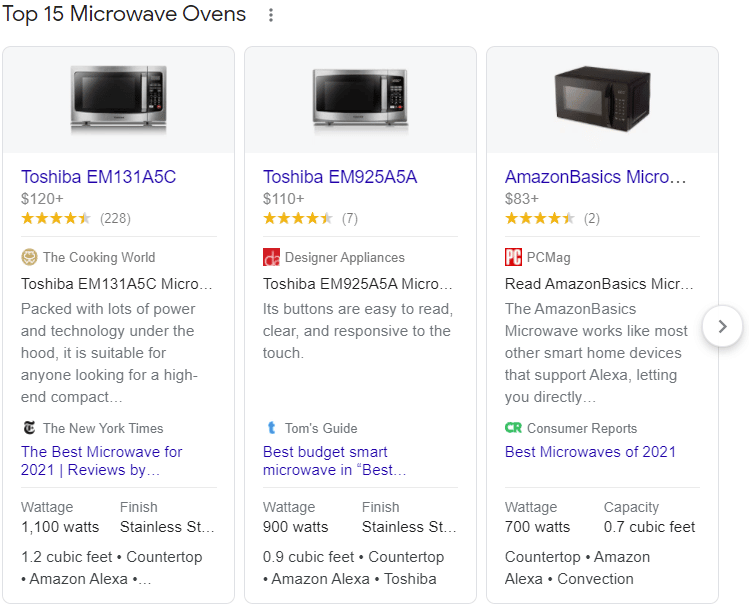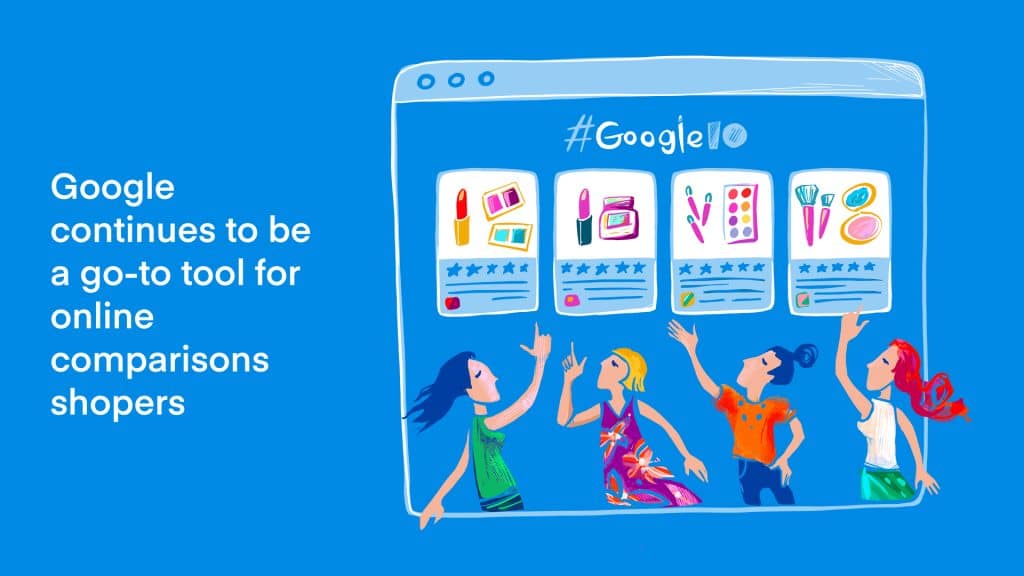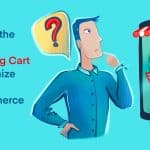
Google may not be the first name that comes to mind when you think of online sales, but the tech giant continues its push to become the ultimate ecommerce middleman. The announcement of Google Shopping Graph, Google’s new AI-driven product discovery engine, will further enhance that role.
Shopping Graph follows the successful 2020 rollout of Google’s commission-free Buy on Google program. This initiative, built on partnerships with third-party service providers like Shopify and PayPal, has allowed ecommerce sellers of all sizes to gain exposure to shoppers who initiate their buying journeys on search engines.
That said, Google still has a long way to go. According to an August 2020 survey, most ecommerce searches still begin on Amazon. However, Google remains a go-to tool for online comparison shoppers—a growing trend throughout the pandemic and beyond.
Shopping Graph is Google’s latest effort to be the most powerful non-marketplace ecommerce destination on the web.
How Google Shopping Graph Works?
Announced at 2021’s Google I/O Event, Shopping Graph is Google’s attempt to (in their words) “democratize ecommerce.” A bold claim, but one that may be closer to a reality than a dream.

When a user searches for a product, the Shopping Graph results box pulls relevant products from marketplace listings and brand websites. A series of helpful metrics is provided for each product. Some of the most common data points that surfaced in Shopping Graph results include:
Unlike Google Ads, which requires sellers to pay for exposure, Shopping Graph surfaces products based on Google’s search algorithms. Google is explicit that these results are not paid advertisements.
Clicking on the ‘About this result’ link takes users to an info box stating: “This is info that Google gathered about products available to buy. This is a search result, not an ad. Only ads are paid, and they’ll always be labeled with ‘Sponsored’ or ‘Ad.’”
Ultimately, Shopping Graph aims to provide shoppers with products most likely to match their shopping intent while providing the most relevant information they would need to make a purchasing decision. In theory, the fact that these results are not the result of any form of paid advertising should increase consumer trust in them.
Complete and Accurate Product Data is the Key to Getting Featured in Shopping Graphs
Landing featured spots in Google Shopping Graph results will likely be tremendously valuable for ecommerce sellers. Essentially, the program provides free advertising tailored directly to customers with purchasing intent.
So, how do you get your listings to appear in Google Shopping Graphs? The key is making sure Google has access to as much information about your products as possible. It starts with high-quality listings.
Keyword-Rich Descriptions
Google’s algorithm crawls the text associated with your products to determine what you are selling and how closely it matches what customers are searching for. Regularly audit your catalog to ensure you make the most of your listing character counts.
This provides yet another reason why investing time and energy into search engine optimization (SEO) is such a valuable proposition for ecommerce sellers.
Multiple Product Categories
When given the opportunity, select as many relevant categories for your products as possible. This will not only help the Google Shopping Graph algorithm properly define your products, but it is also a best practice for nearly all ecommerce marketplaces where you list.
Images and Video
You want to be sure that your product listings have clear and attractive multimedia. Photos and video continue to be driving forces in engaging customer attention and conveying the value of your products.
Google Shopping Graph results rely on these, as well. Moreover, strong visuals will help your Shopping Graph appearance stand out from the competition.
Ensure Google Knows What You Are Selling
There are two main ways you can help surface your listings so that Shopping Graphs are more likely to pick them up:
Google Merchant Center Product Properties
If you are already using Buy on Google (and you should be!), your Merchant Center product properties pages are filled with the relevant details Google Shopping Graphs are looking for. This product data should be kept current and as complete as possible.
Descartes Sellercloud’s catalog features include tools to make this process simple.
Google’s Shopping Cart Partnerships
Alongside the Shopping Graph announcement, Google spotlighted an expansion of its existing partnership with the popular shopping cart platform Shopify. A few weeks later, a similar partnership was announced with Shopify rival WooCommerce.
Google is committed to leveraging these relationships (and others like them) to help bolster its ecommerce value. These partnerships allow sellers to integrate their complete catalogs into the Google ecommerce ecosystem, including Shopping Graph, with just a few clicks.
For Descartes Sellercloud users already taking advantage of our Shopify or WooCommerce integrations, this is an excellent option.

Getting the Most Out of Google’s Shopping Graph
Ultimately, getting the most out of Google Shopping Graph involves search engine optimization (SEO) for ecommerce. You want to position your product listings and brand so that Google’s algorithms and AI tools can properly find and understand them. Should the stars align, you boost your brand profile and attract customers.
Despite Amazon’s dominance, online shoppers show increased comfort in branching beyond singular marketplaces. Google has been an essential tool for connecting shoppers to the products, deals, brands, and marketplaces that offer what they seek. This has been evident in the record boosts in SEO visibility for several marketplaces and brands over the past year.
The emergence of the Shopping Graph should only serve to continue this trend. This evolution of customer online shopping habits, alongside Google’s commitment to improving ecommerce searches, points to another critical conclusion: an omnichannel ecommerce presence matters now more than ever.
When you diversify your online visibility across multiple channels, you increase the odds that customers will find your products and the likelihood that search algorithms like Google Shopping Graph will pick up your listings. Simply put, the higher your web exposure, the more customers you will reach.
Descartes Sellercloud’s omnichannel growth platform provides the tools to create an optimized ecommerce catalog and list products across multiple channels from a single, convenient interface. Our end-to-end order management helps ensure efficient inventory management, reliable fulfillment, and satisfied customers, as well as key Shopping Graph metrics.
Contact us for a free demo and consultation to learn how Descartes Sellercloud can help you grow your ecommerce brand into an omnichannel business.




